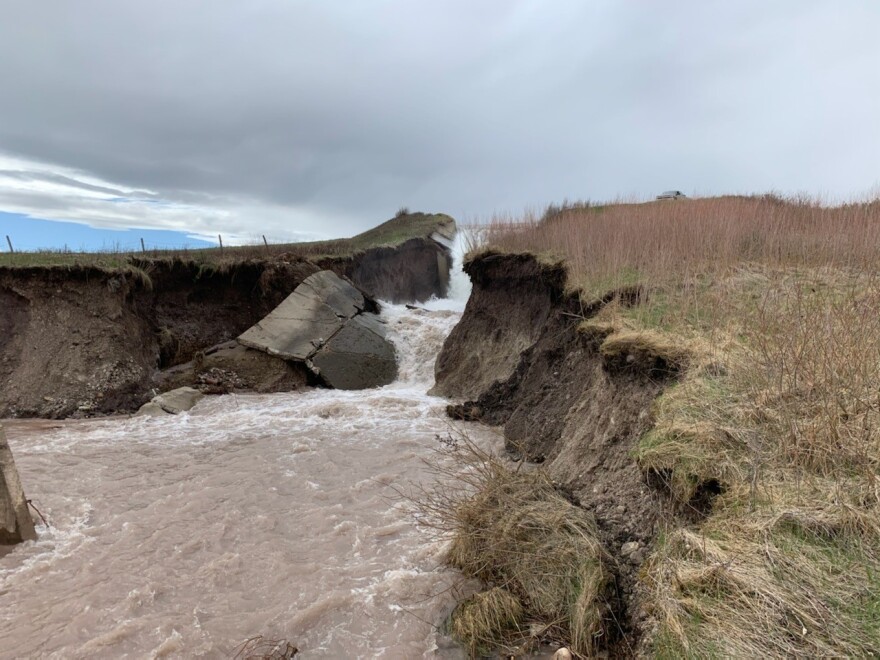The bipartisan Infrastructure Investment and Jobs Act passed by Congress earlier this year is expected to direct billions of dollars toward infrastructure projects in Montana.
One project in particular will benefit from a $100 million infusion because of some carefully crafted language inserted by Democratic Sen. Jon Tester, one of the 10 senators who crafted the act.
The Milk River Project along the Montana Hi-Line has been around for more than 100 years — and Tester says it has been worn out for about 40.
"Back here we had the opportunity to put in some language that’s pretty specific," Tester said. "Don’t know if the Milk River Project is the only one that would be eligible for this, but I hope it is."
The Milk River Project diverts water from St. Mary River into the Milk River through a diversion dam and series of siphons, drops and a canal. Starting on the Blackfeet Reservation, the Milk River flows for 729 river miles into Canada and along the Montana Hi-Line, where it provides water for municipalities, tribes and irrigators before emptying into the Missouri River near Fort Peck Dam.
Tester says he’s been trying to get funding for the Project since his days in the Montana Legislature nearly two decades ago.
The language he inserted in the water section of the infrastructure bill is specific to the Milk River project without actually naming it: Construction had to have begun before 1915; it had suffered a failure within the last 2 years; and the failure had to have resulted in the inability to deliver irrigation water.

The Milk River Project was shut down last year after the collapse of Drop 5, a concrete structure that moves water through the canal from the St. Mary River into the Milk River. The construction kept irrigators high and dry for several months.
On top of the "fix-it" list is the diversion dam and headwaters structure. That’s where all of this water begins the journey.
"There are some years when the contribution to the Milk River flow from the St. Mary can be as high at 90%," said Ryan Newman, the area manager for the Bureau of Reclamation, which owns and operates the system
Newman says the diversion dam is in desperate need of replacing.
"It reminds me of a car with 300,000 miles on it that’s running fine," he said, "but you never know when some part of it is going to fail."
"You never know when some part of it is going to fail."
The agency had already started collecting data and designing a new dam even before the infrastructure bill was signed into law.
"We knew we had to start designing it because to go and construct a facility and structure of this nature its not a small task like building a house," Newman said.
Complicating the process are the endangered bull trout that live in the St. Mary River. Newman says the new design allows the fish to move up and down the river but keeps them out of the canal.
The entire project from design to construction could use up the entire $100 million included in the infrastructure bill. And it’s all non-reimbursable — important for those who depend on the Milk River. Normally users are responsible for 75 percent of the costs of repairs like this.
Jennifer Patrick is Project Manager for the Milk River Project and the Joint Board of Control, the system’s users. Normally they are responsible for 75 percent of the costs of repairs like this.
"It's 100 percent non-reimbursable to the project," said Jennifer Patrick, project manager for the Milk River Project and the Joint Board of Control that represents the system's users. "And so the irrigators, the beneficiaries, the towns, the cities, everyone … there’s no cost share."
Newman says the Bureau of Reclamation anticipates it will finish design work this fiscal year, award a contract in 2023 and begin construction the following year.
In the meantime, the agency and the users will continue preventive measures to keep water flowing from the St. Mary River into the Milk River — and onto the communities that depend on it.



